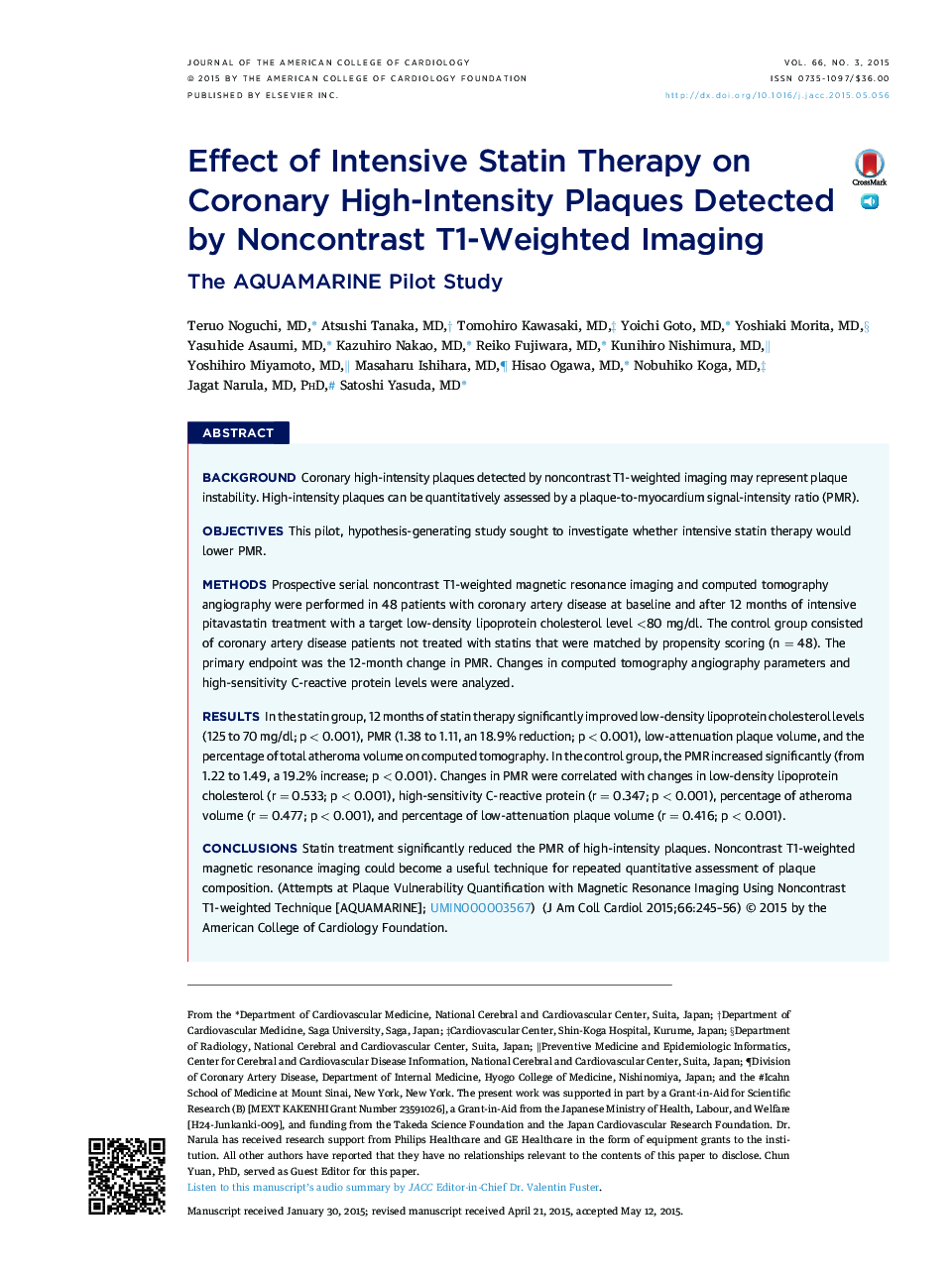| کد مقاله | کد نشریه | سال انتشار | مقاله انگلیسی | نسخه تمام متن |
|---|---|---|---|---|
| 5982552 | 1577039 | 2015 | 12 صفحه PDF | دانلود رایگان |

BackgroundCoronary high-intensity plaques detected by noncontrast T1-weighted imaging may represent plaque instability. High-intensity plaques can be quantitatively assessed by a plaque-to-myocardium signal-intensity ratio (PMR).ObjectivesThis pilot, hypothesis-generating study sought to investigate whether intensive statin therapy would lower PMR.MethodsProspective serial noncontrast T1-weighted magnetic resonance imaging and computed tomography angiography were performed in 48 patients with coronary artery disease at baseline and after 12 months of intensive pitavastatin treatment with a target low-density lipoprotein cholesterol level <80 mg/dl. The control group consisted of coronary artery disease patients not treated with statins that were matched by propensity scoring (n = 48). The primary endpoint was the 12-month change in PMR. Changes in computed tomography angiography parameters and high-sensitivity C-reactive protein levels were analyzed.ResultsIn the statin group, 12 months of statin therapy significantly improved low-density lipoprotein cholesterol levels (125 to 70 mg/dl; p < 0.001), PMR (1.38 to 1.11, an 18.9% reduction; p < 0.001), low-attenuation plaque volume, and the percentage of total atheroma volume on computed tomography. In the control group, the PMR increased significantly (from 1.22 to 1.49, a 19.2% increase; p < 0.001). Changes in PMR were correlated with changes in low-density lipoprotein cholesterol (r = 0.533; p < 0.001), high-sensitivity C-reactive protein (r = 0.347; p < 0.001), percentage of atheroma volume (r = 0.477; p < 0.001), and percentage of low-attenuation plaque volume (r = 0.416; p < 0.001).ConclusionsStatin treatment significantly reduced the PMR of high-intensity plaques. Noncontrast T1-weighted magnetic resonance imaging could become a useful technique for repeated quantitative assessment of plaque composition. (Attempts at Plaque Vulnerability Quantification with Magnetic Resonance Imaging Using Noncontrast T1-weighted Technique [AQUAMARINE]; UMIN000003567)
Journal: Journal of the American College of Cardiology - Volume 66, Issue 3, 21 July 2015, Pages 245-256